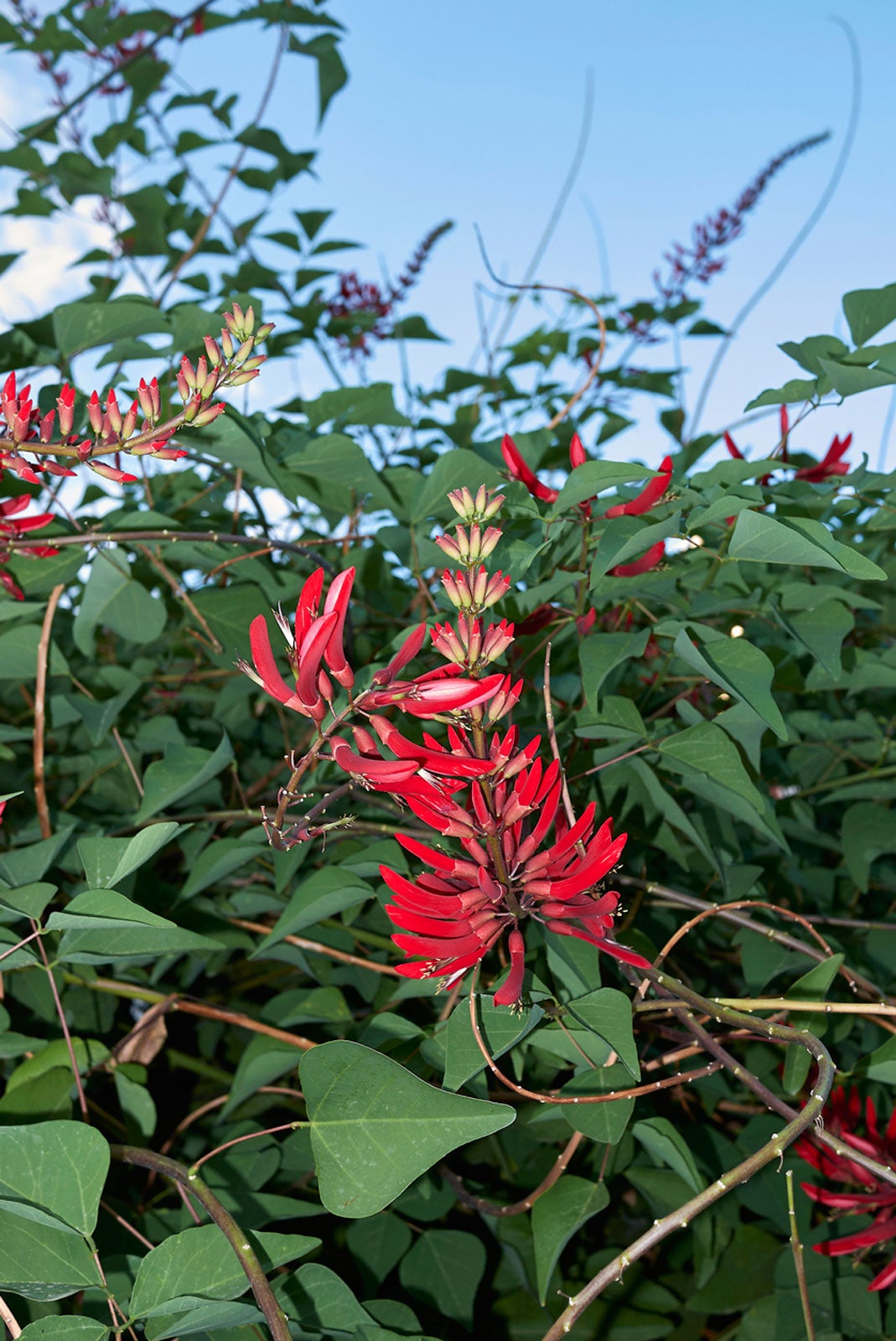Coral Bean Care – How To Plant Coral Bean Seeds


The coral bean (Erythrina herbacea) is low-maintenance specimen. Grow the coral bean plant in a natural garden or as part of a mixed shrub border. Colorful and attractive, the plant has showy spring, tubular blooms and pods of attention-grabbing red seeds in autumn. Green pea-like pods turn blackish purple with seeds that are shiny and scarlet inside.
Grow the coral bean with other colorful plants, as the shiny leaves may become sparse during summer heat. Flowers are shaped like an arrowhead and blooms appear profusely on numerus annual stems. They are a magnet for hummingbirds.
About Coral Bean Planting
Also called the Cherokee bean, this family of plants grows in warm-season climates around the world. In most areas without freezing temperatures, the perennial remains or dies back to return in spring.
Grow it as an annual in locations with freezing temperatures. If your winters are only somewhat cold, just the top of the bush may die out. It is hardy in USDA zones 8 to 11.
Collect seeds from the autumn pods if you wish to grow it in a different area. It is recommended to wear gloves, as the attractive red seeds are poisonous. Otherwise, dropping seeds will likely produce more plants the following year. When collecting seeds or working with the plant, be careful of occasional thorns too. And, of course, don’t allow children to touch the seeds. In fact, you may want to avoid it altogether if you have small kids or pets.
How to Plant Coral Bean
When planting, add coarse sand or other amendment to make soil well draining for the top 2 to 3 inches (5-8 cm.). This plant is particularly sensitive to water on the roots. If soil is clay, amend it before planting with coarse sand.
When planting several coral bean plants, allow 3 to 5 feet (1-1.5 m.) between them. Dig a hole deep enough that the top of the plant’s soil is even with the ground.
Gardening tips, videos, info and more delivered right to your inbox!
Sign up for the Gardening Know How newsletter today and receive a free copy of our e-book "How to Grow Delicious Tomatoes".
Water the plants thoroughly after planting. Water slowly so that it penetrates the root system and ensure that it drains off quickly. The plant should not sit in water for an extended period of time. Continue to water once a week during the first season.
Coral bean care includes watering and fertilization with a balanced fertilizer (10-10-10). Add a 2 to 3 inch (5-8 cm.) covering of mulch to retain moisture and protect the sensitive root system from cold.
Enjoy the beautiful springtime blooms and the hordes of hummingbirds which are commonly drawn to the plant.

Becca Badgett was a regular contributor to Gardening Know How for ten years. Co-author of the book How to Grow an EMERGENCY Garden, Becca specializes in succulent and cactus gardening.
-
 Grow ‘Karl Rosenfield’ Peony Plants For The Ultimate Frilly Border Beauties And Cut Flowers
Grow ‘Karl Rosenfield’ Peony Plants For The Ultimate Frilly Border Beauties And Cut FlowersFor frilly double magenta peony petals infused with a heady fragrance, grow ‘Karl Rosenfield’ peony plants. Here’s how to cultivate the ultimate plushy blooms
By Tonya Barnett
-
 10 Common Composting Problems That Can Spoil Your Garden Gold – Plus Easy Fixes
10 Common Composting Problems That Can Spoil Your Garden Gold – Plus Easy FixesLearn how to troubleshoot common composting issues before they ruin your stash – from bad smells and bugs to materials not breaking down as they should.
By Susan Albert